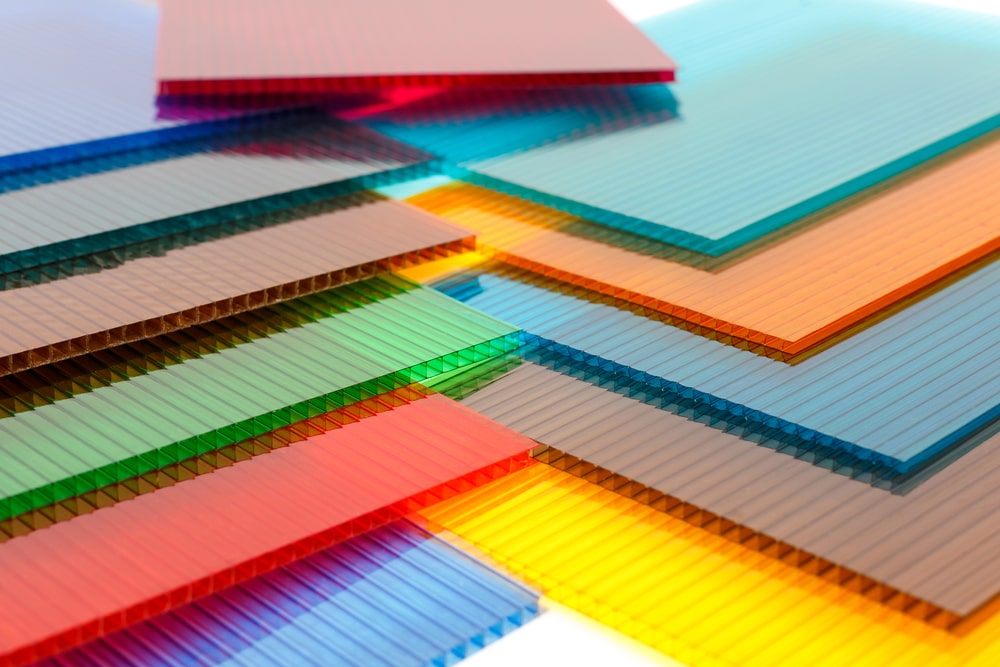

Previously published on fastradius.com on September 28, 2022
Since its development in the mid-20th century, polycarbonate (PC) has been an increasingly popular material in manufacturing. Today, around 2.7 million tons of polycarbonates are produced each year globally. Over the years, various companies have created different formulas for polycarbonate, so there are several industry grades of polycarbonate to choose from. Some forms have more glass fiber reinforcement, while others have additives like ultraviolet stabilizers for protection against long-term sun exposure.
Strong and versatile, this amorphous thermoplastic is resistant to heat, impact, and many chemicals. As such, polycarbonate is ideal for components that need to be tough or repeatedly sterilized and is often used in the automotive and medical industries.
Each company manufactures polycarbonates slightly differently, but polycarbonate materials have traditionally been created via the condensation polymerization of bisphenol A and carbonyl chloride. However, many companies have started to use diphenyl carbonate instead because carbonyl chloride is extremely toxic.
Regardless of whether carbonyl chloride or diphenyl carbonate is used, a bisphenol A solution in sodium hydroxide is required and then mixed with the carbonyl chloride or diphenyl carbonate solution in an organic solvent so polymerization can take place. When the polycarbonate forms, it will initially be in a liquid state. The solution will be evaporated to form granules, or ethanol will need to be introduced to precipitate the solid polymer.
Once created, polycarbonate is often sold in rods, cylinders, or sheets and can be used in various manufacturing processes. Polycarbonate is compatible with thermoforming, extrusion, and blow molding, but it’s most often used with injection molding. After all, as a thermoplastic, polycarbonate can be melted, cooled, and reheated without burning or significant degradation, making it an ideal injection molding material.
During injection molding, polycarbonate needs to be processed at a high temperature and injected into the mold with high pressure because polycarbonate is quite viscous. The melt temperature should be between 280°C and 320°C, and the mold temperature should fall between 80°C and 100°C. However, those numbers can vary depending on the grade of polycarbonate being used. For example, a high-heat polycarbonate will require a melt temperature between 310°C and 340°C and a mold temperature between 100°C and 150°C, whereas a PC-ABS (polycarbonate/acrylonitrile butadiene styrene) blend’s melt temperature only needs to be between 240°C and 280°C and its mold temperature can fall as low as 70°C and up to 100°C.
While there are several grades of polycarbonates, each with their own molecular mass, structure, and properties, all polycarbonates have a few things in common.
For one, they are known for their toughness and high impact resistance. As a result, polycarbonate is often used for applications that require reliability and high performance.
Despite their toughness and strength, polycarbonates are light weight, allowing for extensive design possibilities and relatively easy installation when compared to other materials.
Polycarbonates are also very resistant to heat and flames. A polycarbonate can maintain its toughness in temperatures up to 140°C, which means polycarbonate parts can withstand repeated sterilization. Polycarbonates also have light transmittance rates above 90% and good chemical resistance against diluted acids, oils, greases, aliphatic hydrocarbons, and alcohols.
A polycarbonate’s properties depend on its molecular mass and structure, so each material is slightly different. To give you an idea of what you can expect, here are some typical key characteristics and specifications:
As you can see, polycarbonate manufacturing has plenty to offer. However, there are a few things you’ll want to be aware of before selecting this material for a project. For example, its mechanical properties can degrade after prolonged exposure to water over 60°C. Polycarbonate is also susceptible to scratching, more costly to manufacture than many other materials, and vulnerable to diluted alkalis and aromatic and halogenated hydrocarbons. Additionally, the polycarbonate formulations without UV stabilizers can sometimes yellow over time when exposed to UV rays.
Polycarbonate’s toughness and high impact resistance make it a popular material choice for automotive industry manufacturers, particularly when it comes to parts that must be clear or translucent and are subject to frequent impact, such as headlight and turn signal lenses.
In the medical industry, polycarbonate can be found in everything from incubators to dialysis machine housings. After all, polycarbonate is tough, resistant to heat, dimensionally stable, and able to withstand sterilization via FDA-approved methods including autoclaves and irradiation. Polycarbonate can be used in blood filters, reservoirs, and oxygenators, as well as surgical instruments. Plus, given its transparency, polycarbonate enables doctors to more easily monitor blood and track the administration of fluids.
Polycarbonate is also a material of choice in many household appliances, such as mixers, hair dryers, refrigerators, and electric razors. Other common uses for polycarbonate include exterior lighting fixtures, machinery guards, protective gear, bullet-proof glass, fuse boxes, television housings, roofing, skylights, greenhouses, suitcases, eyeglasses, and beverage containers, such as baby bottles, sippy cups, and refillable water bottles.
Polycarbonate is a strong and impact-resistant thermoplastic that’s used across a variety of industries. However, there are several different kinds of polycarbonate on the market, each with its own characteristics. Working with an experienced manufacturing partner like SyBridge can make all the difference for product teams who are unfamiliar with polycarbonate or are looking to manufacture parts and products with materials that may be more suitable for a specific application. Want to see if polycarbonate is the right material for your next project? Create an account and upload your part files or contact us today to get started.
Forget typical cycle times. We're pushing the boundaries of conformal cooling. While traditional approaches deliver…
Forget typical cycle times. We're pushing the boundaries of conformal cooling. While traditional approaches deliver…
From left to right: Brayden Janak (apprentice); Logan Vifaquain (CNC machining, Programming and CMM); Ron…
SyBridge Technologies is proud to announce we have been awarded the 2023 General Motors Supplier…
Today, designers and engineers are accustomed to working with digital tools in their day-to-day jobs.…
Optimizing Your Injection Molding Process for Cost-Effective Manufacturing Excellence In today’s competitive landscape, manufacturers are…